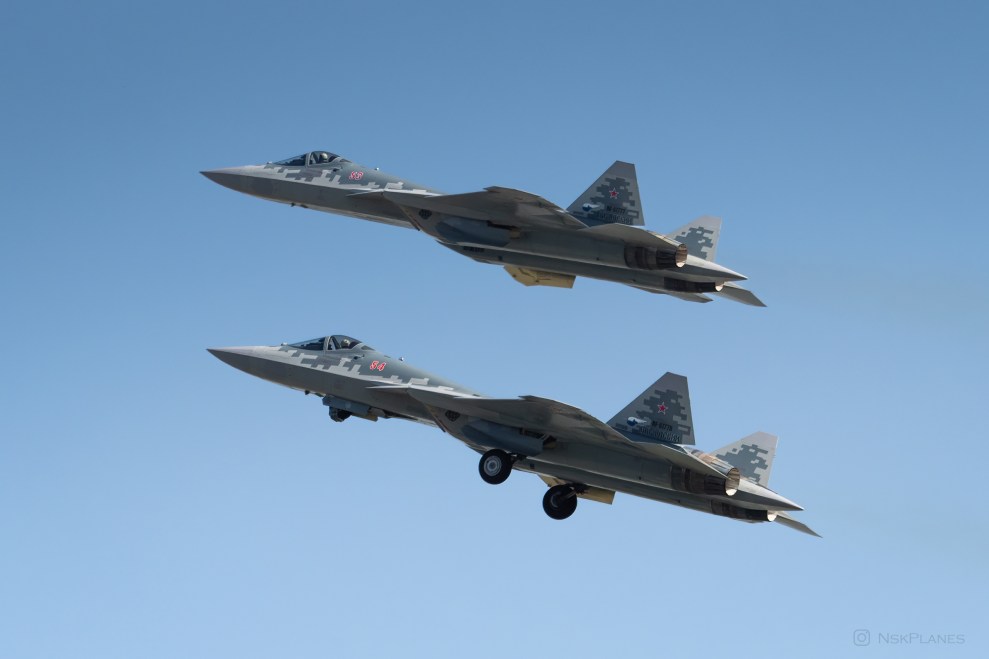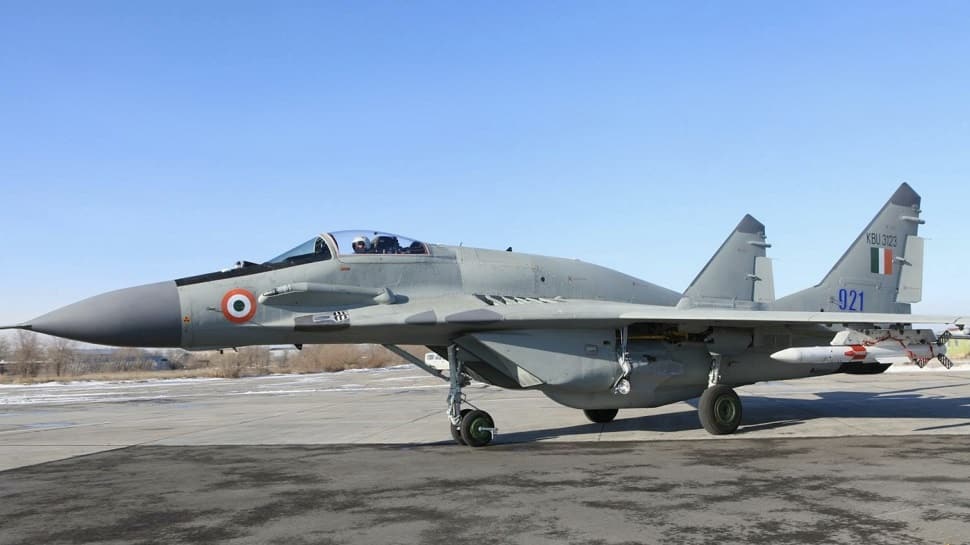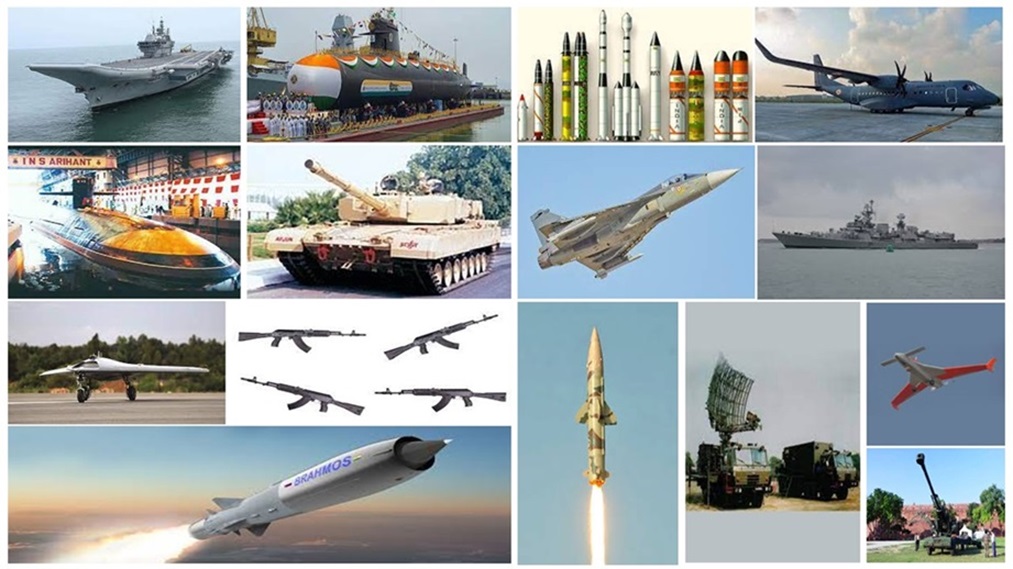SOURCE: RAUNAK KUNDE / NEWS BEAT / IDRW.ORG


Russia’s state-owned defense conglomerate, Rostec, has proposed an ambitious plan to convert the existing Su-30MKI production line at Hindustan Aeronautics Limited’s (HAL) Nashik facility to manufacture the Su-57E, the export variant of Russia’s fifth-generation stealth fighter.
In an exclusive revelation to idrw.org, Rostec official confirmed that the Nashik facility, currently set up to produce 12 Su-30MKI jets annually, could manufacture 14 Su-57E jets per year if converted. This increase in production capacity is attributed to the Su-57E’s smaller dimensions compared to the Su-30MKI, allowing for more efficient use of manufacturing space and resources. Additionally, Rostec provided specific dimensional differences between the two aircraft, shedding light on their relative sizes and the implications for production scaling.
Continue readingSOURCE: RAUNAK KUNDE / NEWS BEAT / IDRW.ORG


At Aero India 2025, held in Bengaluru, India’s Defence Research and Development Organisation (DRDO) stole the spotlight with the unveiling of a new 155mm ramjet-powered artillery projectile, a cutting-edge addition to India’s artillery arsenal. Designed to achieve ranges exceeding 50-60 kilometers, this innovative munition promises to blend advanced technology with affordability, positioning it as an attractive option for both local production and the global export market. Speaking to idrw.org, a DRDO official shed light on the projectile’s potential, its cost dynamics, and the road ahead, signaling India’s intent to redefine artillery warfare.
The DRDO’s 155mm ramjet projectile leverages ramjet propulsion—a technology typically seen in missiles—to significantly extend the range of conventional artillery. Unlike standard 155mm shells, which rely solely on the initial muzzle velocity from the gun barrel (typically achieving 20-40 km with base-bleed or rocket-assisted designs), the ramjet version uses an air-breathing engine that activates mid-flight. By drawing in atmospheric oxygen to sustain combustion, the ramjet boosts the projectile’s velocity and range, surpassing competitors like the U.S. M549 RAP (30 km) and even matching or exceeding advanced shells currently under development globally.
Continue readingSOURCE: RAUNAK KUNDE / NEWS BEAT / IDRW.ORG


In a significant advancement for India’s defence capabilities, the CSIR-National Chemical Laboratory (CSIR-NCL) has partnered with the Indian Air Force’s 11 Base Repair Depot (BRD) to address a critical issue with the On-Board Oxygen Generation System (OBOGS) of the MiG-29 fighter jets. This collaboration has led to the development of an innovative process to rejuvenate the zeolite material, essential for providing oxygen to pilots at high altitudes.
Zeolite, a porous mineral used in OBOGS to separate oxygen from the air, gradually loses its effectiveness as it absorbs moisture, reducing the oxygen supply to pilots. This degradation posed a significant challenge to the operational efficiency of the MiG-29 jets, vital for India’s air defence.
Continue readingSOURCE: AFI


A Pakistani defense analyst recently cast doubt on India’s claims regarding the Astra MkIII, also known as “Gandiva,” a ramjet-powered beyond-visual-range air-to-air missile (BVRAAM) developed by the Defence Research and Development Organisation (DRDO). Speaking to a local forum, the analyst argued that the missile’s advertised range of 340 kilometers at a launch altitude of 20 kilometers (65,616 feet) is “near impossible” to achieve, citing that few aircraft in the Indian Air Force (IAF) inventory can operate at such heights.
The analyst contrasted this with an advertised range of 190 kilometers (120 miles) at an 8-kilometer (26,000 feet) altitude, suggesting a disconnect in the missile’s performance claims. This article explores how the Astra MkIII can realistically achieve its 340 km range and explains its climb profile post-launch, drawing parallels with the European Meteor missile, to address these skepticism-driven concerns.
Continue readingSOURCE: AFI


India’s push to involve the private sector in fighter jet production, as part of its ‘Make in India’ and ‘Aatmanirbhar Bharat’ initiatives, promises to bolster indigenous defense capabilities and reduce reliance on imports. However, for private companies to establish viable production lines for aircraft like the Tejas Mk1A, Mk2, or the Advanced Medium Combat Aircraft (AMCA), the venture must extend beyond meeting Indian Air Force (IAF) demands. Experts argue that profitability and investment recovery hinge on creating exportable jets, which in turn necessitates a fully localized supply chain—including engines—to ensure competitiveness in the global market and control production costs.
Unlike state-owned enterprises like Hindustan Aeronautics Limited (HAL), private sector firms operate under stricter financial imperatives. Setting up a fighter jet production line involves massive capital expenditure—estimated at $1-2 billion for infrastructure, tooling, and R&D—alongside ongoing costs for skilled labor, testing, and certification. With the IAF’s orders typically limited to 100-300 units per program (e.g., 83 Tejas Mk1A, 120-150 Mk2, 150-200 AMCA), the per-unit cost remains high due to low economies of scale. For instance, the Tejas Mk1A’s price hovers around $45-50 million, partly because production is confined to domestic needs.
Continue readingSOURCE: AFI


Saurav Jha, Director of Delhi Defence Review, has urged the Indian Air Force (IAF) to shift its focus toward enhancing Intelligence, Surveillance, and Reconnaissance (ISR) capabilities, Airborne Warning and Control Systems (AWACS), long-range missile mid-air refuellers, and a super-dense air defence network as the IAF grapples with a declining fighter jet squadron strength.
Speaking to News9 Plus, Jha emphasized that these investments are critical to maintaining air dominance and deterring adversaries, drawing lessons from the ongoing conflict in Ukraine.
Continue readingSOURCE: AFI


In a notable shift in global defence dynamics, several European Union (EU) countries are exploring the procurement of Indian-made weapons systems, including small arms, ammunition, and major defence platforms, to bolster their military modernization efforts. This development, gaining traction as of March 1, 2025, follows a stern warning from the 47th U.S. President, Donald Trump, urging EU nations to ramp up their weapons purchases to strengthen NATO and enhance collective security. With Trump’s push amplifying pressure on Europe to reduce reliance on U.S. arms and diversify suppliers, India’s burgeoning defence industry has emerged as an attractive option for cost-effective, reliable solutions.
During a series of statements in early 2025, President Trump reiterated his long-standing critique of NATO allies, particularly in the EU, for not meeting defence spending targets and over-relying on American military hardware. He warned that the U.S. might scale back its security commitments unless European nations significantly increased their weapons acquisitions, a stance that echoes his first term’s rhetoric but now carries added weight amid heightened geopolitical tensions with Russia and China. Posts on X from February 2025 reflect a mix of concern and defiance in Europe, with some leaders acknowledging the need for self-reliance while others criticize Trump’s approach as coercive.
Continue readingSOURCE: IDRW.ORG


At Aero India 2025, held in Bengaluru from February 10-14, Adani Defence and Aerospace made headlines by showcasing the Akshi 7, a rebadged version of the Elbit Hermes 650 Spark, a digital autonomous unmanned aerial system (UAS).
Building on the success of the display, Adani Defence has now revealed to idrw.org that it is working closely with Israel’s Elbit Systems to develop an armed variant of the Akshi 7. Described as a next-generation drone, the Akshi 7 boasts Medium Altitude Long Endurance (MALE) capabilities, offering exceptional payload capacity, range, speed, and efficiency, positioning it as a transformative asset for modern military operations. This collaboration underscores India’s push toward indigenous defense innovation while leveraging global partnerships to meet strategic needs.
Continue readingSOURCE: IDRW.ORG


India, one of the world’s fastest-growing aviation markets, is poised to order nearly 2,000 aircraft over the next two decades, presenting a lucrative opportunity for global aerospace giants Airbus and Boeing. However, despite intense pressure from the Indian government to establish local Final Assembly Lines (FALs) as part of the ‘Make in India’ initiative, both companies have steadfastly resisted committing to such investments.
According to insights shared with Indian Defence Research Wing (idrw.org) by a former Airbus India employee, this reluctance stems from strategic priorities and lessons learned from past experiences, notably in China.
Continue readingSOURCE: AFI


In a bold move that marks a significant pivot from his food-tech roots, Zomato founder and CEO Deepinder Goyal has invested $20 million in LAT Aerospace, an ambitious aerospace startup focused on developing low-cost 24-seater short take-off and landing (STOL) passenger aircraft.
This private sector initiative aims to transform regional air connectivity in India by offering affordable and accessible aviation solutions, positioning itself as a direct challenger to public sector endeavors like Hindustan Aeronautics Limited’s (HAL) 19-seater Hindustan 228 aircraft and the National Aerospace Laboratories’ (NAL) proposed Saras MkII, which has been under development for years.
Continue readingSOURCE: AFI


The pro-Russian website Bulgarian Military published an article titled “J-20 and J-35 Are Real, China’s White Emperor Is a Big Fake,” authored by Boo Nikolov. The report swiftly ignited widespread discussion within defense circles, dissecting China’s aerospace claims with a critical lens. What followed was even more unexpected: the next day, China’s military media channel Guang Vision on the NetEase platform issued a response that effectively acknowledged the White Emperor as a conceptual aircraft rather than a functional fighter jet.
This rare admission from Chinese media, coupled with international skepticism, has exposed the White Emperor as a piece of strategic propaganda rather than a groundbreaking military asset, raising broader questions about the credibility of China’s military technology claims.
Continue readingSOURCE: AFI


In a significant revelation, Lt Gen P R Shankar (Retd), a noted defence expert and former artillery officer of the Indian Army, has highlighted the strategic importance of India’s newly developed BM-04 missile system, describing it as a “China-specific” weapon designed to target People’s Liberation Army (PLA) forces stationed in the Tibetan Plateau. The retired general emphasized that the hypersonic nature of the BM-04 makes it a formidable weapon, capable of penetrating even the most advanced Chinese air defence systems deployed in the region.
The Tibetan Plateau, often referred to as the “Roof of the World,” has emerged as a critical theatre in the ongoing India-China military standoff, particularly along the Line of Actual Control (LAC). Over the past decade, China has significantly bolstered its military infrastructure in the region, including the deployment of a dense network of air defence systems. These include advanced surface-to-air missile (SAM) systems like the HQ-9, HQ-16, and possibly even the S-400, acquired from Russia. This multi-layered air defence network poses a significant challenge to the Indian Air Force (IAF), as penetrating such heavily guarded airspace with conventional fighter jets or traditional surface-to-surface missiles (SSMs) carries a high risk of interception.
Continue readingSOURCE: AFI


In a significant display of military collaboration, the Indian Army was recently given a first-hand demonstration of Japan’s cutting-edge Type-16 Maneuver Combat Vehicle (MCV) during the annual joint military exercise, Dharma Guardian, held between India and Japan.
The exercise, which has become a cornerstone of Indo-Japanese defense ties, provided a platform for both nations to showcase their military prowess, exchange tactical expertise, and strengthen interoperability. This year’s iteration of Dharma Guardian saw Japan deploying its advanced Type-16 MCV, a formidable 8×8 wheeled platform that left a lasting impression on the Indian contingent.
Continue readingSOURCE: AFI


In a significant step towards enhancing its operational capabilities in the challenging terrains of the Northeast, the Indian Army recently showcased its newly inducted Polaris RZR Pro 4×4 All-Terrain Vehicle (ATV) in Sikkim.
During the recent demonstration in Sikkim, the Indian Army showcased the Polaris RZR Pro 4×4’s capabilities in a series of simulated exercises designed to replicate real-world operational scenarios. The ATV navigated through steep mountain trails, crossed shallow streams, and maneuvered through dense undergrowth with remarkable ease, proving its adaptability to the region’s diverse terrain. Army personnel also demonstrated the vehicle’s ability to carry troops and equipment to forward positions rapidly, highlighting its role in enhancing last-mile connectivity in areas inaccessible to larger vehicles.
Continue readingSOURCE: RAUNAK KUNDE / NEWS BEAT / IDRW.ORG


At Aero India 2025, held in Bengaluru from February 10-14, the Aeronautical Development Agency (ADA), under India’s Defence Research and Development Organisation (DRDO), showcased a scaled model of the Archer-NG Medium Altitude Long Endurance (MALE) Unmanned Aerial Vehicle (UAV), integrated with the Astra Mk1 Beyond Visual Range Air-to-Air Missile (BVRAAM).
This display marked a significant milestone in India’s indigenous UAV development program, highlighting the country’s growing capabilities in unmanned systems. Building on this showcase, ADA has now revealed ambitious plans to develop a weaponized variant of the Archer-NG, equipped with an Active Electronically Scanned Array (AESA) radar, to expand its operational scope across air-to-air, air-to-ground, surveillance, and armed reconnaissance missions. According to details shared with idrw.org, this advanced variant promises to transform the Archer-NG into a multi-role platform with enhanced combat and intelligence-gathering capabilities.
Continue reading